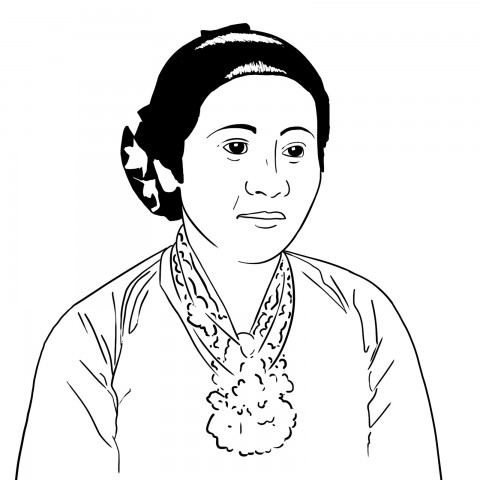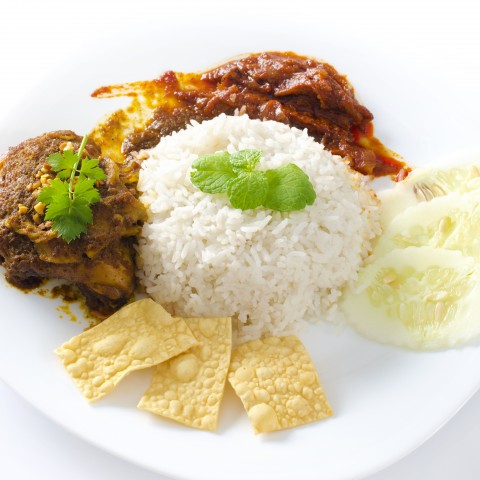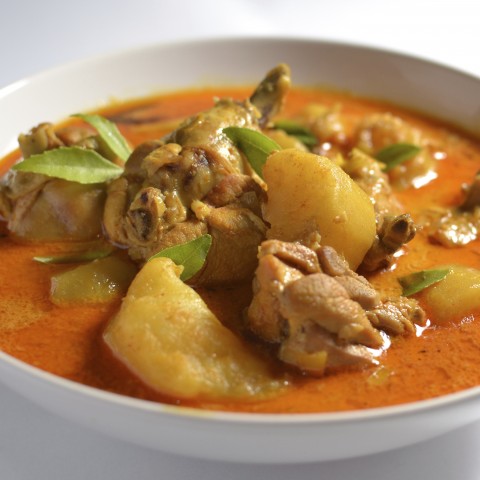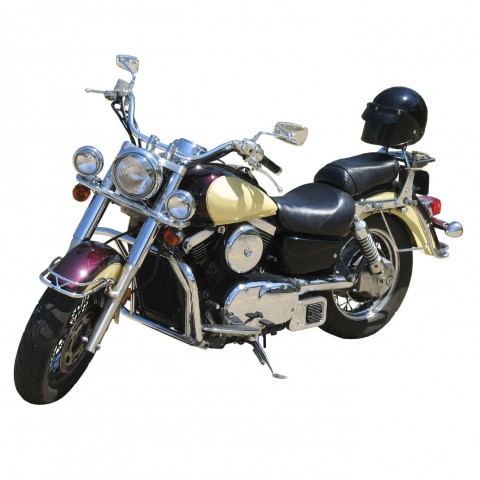
It’s easy to recognize English loanwords in Indonesian, and they pop up at all levels of language use. If you were to open up Wikipedia, a Jakarta newspaper, or even a YouTube comment section in Indonesian right now, chances are a couple of words would jump out at you.
In this article, we’ll introduce you to some key characteristics of English words in Indonesian, and before long, you’ll be using them perfectly yourself!
 Table of Contents
Table of Contents
- Introduction to Indonesian English
- Examples of English Used in Indonesian
- Loanwords vs. Indonesian English
- What an Indonesian Accent Sounds Like in English
- English Words Derived from Indonesian
- Conclusion
Introduction to Indonesian English

The thing about Indonesian is that it’s a newer language. If you speak Indonesian totally natively (because your parents spoke it at home), you’re actually in the minority. You’re probably young if so, and your grandparents definitely didn’t speak this language.
Indonesian was created as a standardized version of the Malay language, and since the cultural and economic centers of Indonesia are on the island of Java, there’s a great deal of Javanese vocabulary in Indonesian.
Lots of words in Malay actually come from Arabic, and Indonesian has absorbed these words and others. Plus, thanks to a large Chinese population in Southeast Asia and certain Indonesian cities, Chinese words have also influenced the Indonesian language.
All that to say that Indonesian is definitely not shy about adopting words from other languages—and English is no exception.
Besides the influence from Indonesia’s close proximity to Australia, New Zealand, and Singapore (countries with English as an official language), Indonesians also see English as a worldly language valuable for travel in and out of Southeast Asia.
Plus, internet access in Indonesia is and has been fast and cheap. People spend their time watching Indonesian vloggers on YouTube, and when they’re all out of those, they switch to English-speaking ones instead.
This applies to pop music, too. Music of all genres exists in Indonesian as well, but walk into any mall or upscale store, and the likelihood that you’ll hear Indonesian beats instead of American pop is virtually nothing.
Therefore, English is just considered “cool” in Indonesia. It’s seen as the ticket to economic success as well as a marker of one’s own status and intelligence.
Examples of English Used in Indonesian

Sometimes a language will borrow words just because of how trendy it is to do so, and then the words end up taking on lives of their own. This is relatively rare in Indonesian, but there are still a couple of decent examples.
The word senior in Indonesian (sometimes respelled sinyor according to Indonesian custom) doesn’t refer to an old person or a student in their last year of high school. Instead, it has a very specific meaning that’s closer to a “superior” in school or work environments.
- Dia dulu seniorku waktu di S1. / “She was my senior in the undergraduate program.”
Quite recently, another fashionable word has entered the scene: guys. This one never gets respelled. Although this word is shifting to gender-neutral in some English dialects, it usually still means “a group of men or boys.” But turn on any vlogging channel on YouTube and what’s the first thing you hear? “Hey guys!”
That’s why in today’s Indonesian, the word guys (or the phrase hey guys) is used without exception even in Indonesian-language vlogs. In the same vein, this word is also used to address groups of people regardless of gender.
By the way, as you study Indonesian, you might get used to the idea that you can guess at a loanword’s meaning. But that’s not always the case, because in some instances, the word might not be a loan at all!
If you need a card for your phone to get data and call service, you would purchase a “SIM card,” right? In Indonesian, however, a SIM is a surat izin mengajarkan, or license to drive a motor vehicle. Be careful what you ask for at the phone store, because what you really need is a kartu ponsel or “mobile phone card.”
The “word” uh-uh always means “no” in English, but in Indonesian it’s actually an affirmative (spelled as he-he). You might think this is something you can easily commit to memory, but when you ask an immigration officer about your visa paperwork and he replies “uh-uh,” you might have a bit of a panic attack before he slides it over to you and you remember what it actually means.
Loanwords vs. Indonesian English

In contrast to those words mentioned above, which have been borrowed into Indonesian with a bit of semantic change, there are dozens—or perhaps even hundreds—of words which have preserved their English meanings entirely.
These appear very frequently in the realms of abstract concepts, computers, and business. For this reason, you might remain unaware of just how rich this vocabulary is if you spend your time watching Indonesian talk shows and movies or reading comic books.
A few English loanwords in Indonesian include:
- regulasi / “regulation”
- prediksi / “prediction”
- protokol / “protocol”
- manajemen / “management”
- kapitalisme / “capitalism”
And even that is not an entirely accurate representation of the way English words are commonly used in Indonesian, because many people use them to talk about everyday matters as well.
There are native Indonesian equivalents for apartemen (“apartment”), stiker (“sticker”), cek (“check”), furnitur (“furniture”), and hundreds of similar words. But out of convenience and habit, even newspapers use these as regular parts of the Indonesian language. In fact, every example in this section was taken from a news article.
You’ll notice that these words are often respelled according to the Indonesian spelling rules and to reflect an Indonesian pronunciation of the English syllables.
Perhaps you’ve already picked up one of the main rules: spell anything ending in -sion or -tion with a si and you’re a good portion of the way through to coming up with a new Indonesian word!
There are even a couple of loan verbs that have been totally assimilated into the Indonesian conjugation and inflection system.
One such example is the verb “sort,” which has entered Indonesian and been totally absorbed as menyortir, disortir, and so on.
Tolong menyortir kertas sesuai ukuran. / “Please sort the paper according to size.”
What an Indonesian Accent Sounds Like in English

Although many Indonesians speak excellent English, there are still some Indonesian-isms that creep through.
Naturally, the sound system of English is quite different from that of Indonesian, and this causes the majority of the problems. Indonesians often have trouble saying th sounds, preferring to just say t or sometimes s.
Indonesian doesn’t have any voiced sounds (like V, B, D, G) at the end of its words, so English loanwords in Indonesian that end in a V sound (like “love”) tend to sound as if they ended in F when spoken by an Indonesian.
And although Indonesian grammar is similar to English grammar in many aspects of sentence structure, there are a couple of things that elude even advanced learners.
One of those things is the use of the word “ever” instead of “before” in the sense of “I’ve never…” You see, in English and in Indonesian, these sentences are made very similarly, but in English we make the distinction between these two words.
- Aku belum pernah ke Jepang. / “I’ve never been to Japan.”
Here, we’re using belum pernah to mean “never before,” but look at what happens when we change it around:
- Aku sudah pernah ke Jepang. / “I have been to Japan before.”
When speaking English, many Indonesians will mistakenly say “I have ever been to Japan,” because of the interference from their own language. If you see this kind of subtle error in a piece of writing, there’s a decent chance an Indonesian wrote it!
English Words Derived from Indonesian

Although Malay and Indonesian are widely spoken languages in their own corner of the world, they haven’t historically been popular enough to leave major traces on other languages. Nevertheless, it is possible to find Indonesian words in English if you look hard enough.
The most famous is probably durian, the spiny and pungent fruit found for sale all over Southeast Asia. The word comes from the root duri (“spine”) plus the suffix –an, but what’s interesting is that this was borrowed by English a couple of hundred years ago. The same word has shifted to duren in modern-day Indonesian, obscuring the root.
Next up is the word orangutan, a species of primate found in the Malay and Indonesian archipelago. It’s unknown whether the original Englishmen who learned this word realized that it’s a simple compound of orang (“person”) and hutan (“forest”). Most young kids who learn this word have no idea it’s not English in the first place!
The last couple of basic Indonesian words in English are used to describe specific things that you can’t find elsewhere: sate/satay (a small barbecue skewer) and rattan (a type of material used to make furniture and baskets).
Conclusion
As you can see, it’s pretty easy to pick up English words used in Indonesian, but it can be a little bit tricky knowing how to use some of them correctly. Smartphone, for instance, is a valid loanword but never underwent any respelling to “smartfon.”
That’s why you need a solid knowledge base as you study the Indonesian language, something that can be brought to you quickly and easily by IndonesianPod101. As you progress through the lessons from beginner to advanced, you’ll slowly pick up the correct usage and definitions of loanwords in Indonesian, from English to Arabic, Dutch, Chinese, and beyond. Start today and see what heights your Indonesian can reach!
Before you go, how many of these English words in Indonesian surprised you? Did we forget to include any that you know? We look forward to hearing from you.






















 Table of Contents
Table of Contents













 Table of Contents
Table of Contents



























 Table of Contents
Table of Contents







